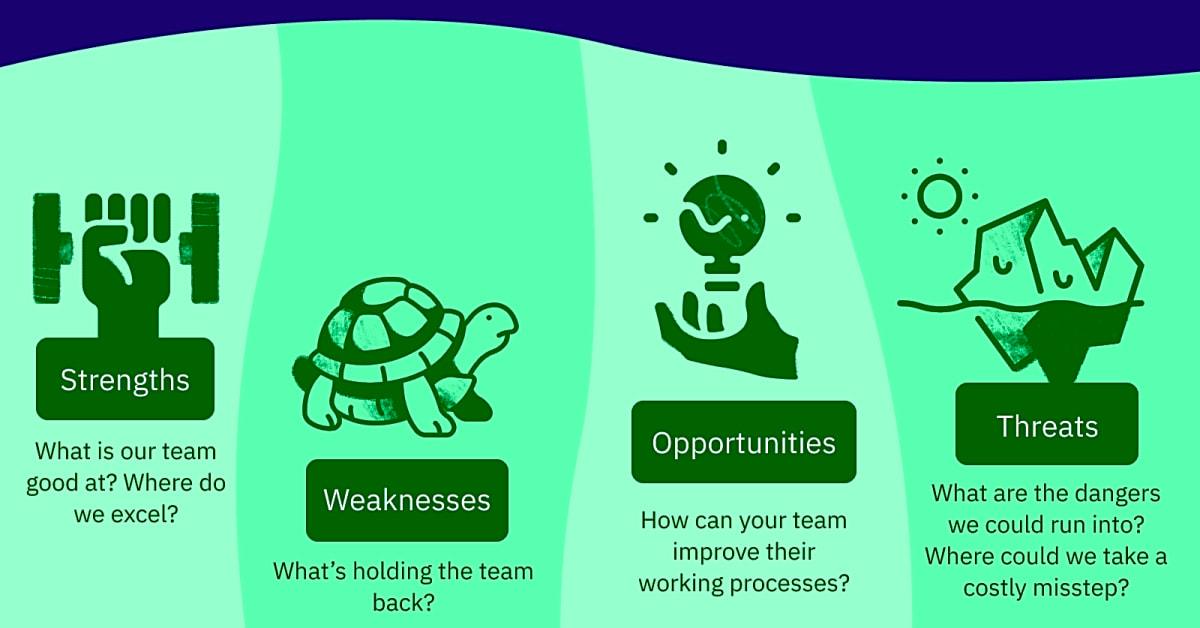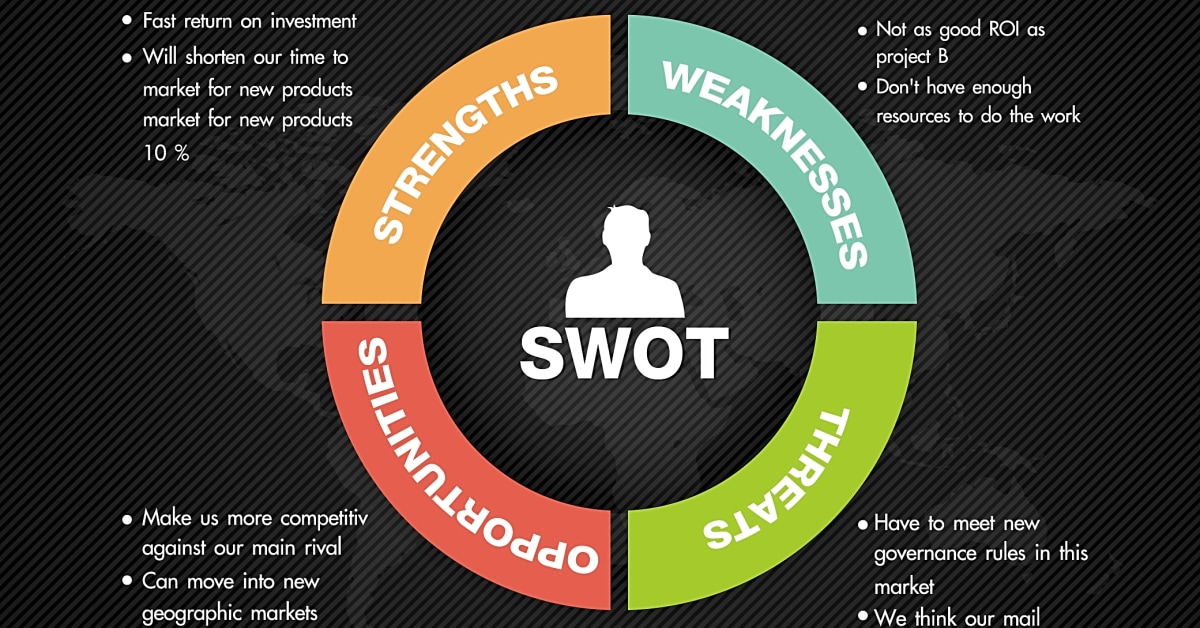Are you feeling lost or unsure about your career path? Do you want to make informed decisions about your professional growth? Look no further, as we dive into the world of SWOT analysis for career planning.
SWOT analysis is a powerful tool that can help you identify your strengths, weaknesses, opportunities, and threats in relation to your career. By understanding these aspects, you can create a solid plan for personal and professional development.
In this article, we will explore the concept of SWOT analysis and how it can be applied to career planning. We will also provide real-life examples and practical tips to help you get started. So, let’s begin our journey towards a successful and fulfilling career!
Firstly, let’s define what a SWOT analysis is. SWOT stands for strengths, weaknesses, opportunities, and threats. It is a strategic planning tool used to evaluate these four aspects in relation to a specific goal or situation. In terms of career planning, a SWOT analysis can help you identify your strengths and weaknesses as a potential employee, as well as potential opportunities and threats in your desired industry.
To conduct a SWOT analysis for career planning, you can use a variety of templates or frameworks. Some popular examples include the TOWS matrix, the SOAR framework, or even a basic four-square grid. These tools can help you organize your thoughts and gain a better understanding of where you stand in terms of your career goals.
Now, let’s move on to some specific examples of how SWOT analysis can be applied in career planning. Let’s say you’re a recent college graduate looking to enter the marketing industry. Your strengths may include strong communication skills and creative thinking abilities. Your weaknesses may include limited experience in the field and a lack of connections. Opportunities could include networking events and internships, while threats could include a competitive job market and rapidly changing technology. By conducting a SWOT analysis, you can identify these factors and strategize on how to use your strengths to take advantage of opportunities and overcome any potential threats.
In addition to using a SWOT analysis for career planning, it can also be helpful for personal development purposes. By evaluating your strengths and weaknesses, you can work on improving yourself and becoming a more well-rounded individual. Furthermore, identifying opportunities and threats can help you make informed decisions about your future career path.
Overall, SWOT analysis is a valuable tool for anyone looking to plan their career or improve themselves. By understanding your strengths, weaknesses, opportunities, and threats, you can make strategic decisions that will benefit your personal and professional development. So why not give it a try? You may be surprised by what you discover.
The Importance of Personal Development
Aside from career planning, SWOT analysis can also be helpful for personal development. Consider these points:
- Self-awareness: SWOT analysis helps you identify your strengths and weaknesses, giving you a better understanding of yourself and areas you may need to work on.
- Goal setting: By recognizing your opportunities and threats, you can set achievable goals and create a plan to overcome obstacles.
- Growth mindset: SWOT analysis encourages a growth mindset by highlighting areas for improvement and providing a framework for continuous personal development.
Different Tools for Conducting a SWOT Analysis
There are various templates and frameworks that can assist you in conducting a SWOT analysis. Some popular examples include:
1. SWOT Matrix: This is one of the most commonly used templates for SWOT analysis. It consists of four quadrants, each representing one aspect of SWOT – strengths, weaknesses, opportunities, and threats. The matrix helps to visually organize the information and make it easier to analyze.
2. TOWS Matrix: This is an expanded version of the traditional SWOT matrix that also takes into account external factors. It helps to identify strategies based on how strengths and weaknesses can be used to take advantage of opportunities and mitigate threats.
3. SOAR Analysis: This framework focuses on strengths, opportunities, aspirations, and results. It emphasizes a positive approach to SWOT analysis by shifting the focus from weaknesses and threats to strengths and opportunities.
4. PESTLE Analysis: This tool helps to analyze external factors that can impact your career planning, such as political, economic, social, technological, legal, and environmental factors.
Examples of SWOT Analysis in Career Planning
Are you unsure of what career path to take? Or maybe you’re feeling stuck in your current job and want to explore new opportunities? Whatever your situation may be, conducting a SWOT analysis can be a valuable tool in helping you make informed decisions about your career. Let’s take a look at some examples of how SWOT analysis can be applied in the context of career planning.
Strengths: One way to use SWOT analysis in career planning is by identifying your strengths. This could include skills, experience, or personal qualities that make you stand out from others. By recognizing your strengths, you can focus on areas where you excel and use them to your advantage in your career.
Weaknesses: On the other hand, SWOT analysis can also help you identify areas for improvement. By acknowledging your weaknesses, you can work on developing new skills or seeking opportunities to overcome them. This can help you become a more well-rounded and competitive job candidate.
Opportunities: Another aspect of SWOT analysis is identifying opportunities for growth and advancement in your career. This could include networking events, further education or training, or even potential job openings within your current company. By taking advantage of these opportunities, you can propel your career forward.
Threats: Finally, SWOT analysis can also help you identify potential threats to your career. These could include industry changes, economic downturns, or competition for job positions. By being aware of these threats, you can prepare yourself and adapt to any challenges that may come your way.
As you can see, SWOT analysis can be a powerful tool in career planning. By understanding your strengths, weaknesses, opportunities, and threats, you can make more informed decisions about your career path. So the next time you find yourself at a career crossroads, remember to conduct a SWOT analysis to help guide your decisions.
In conclusion, SWOT analysis is an effective tool for career planning and personal development. By evaluating your strengths, weaknesses, opportunities, and threats, you can make informed decisions about your future and work towards achieving your goals. Whether you’re a recent graduate or a seasoned professional, conducting a SWOT analysis can provide valuable insights and lead to success in your chosen career path.

